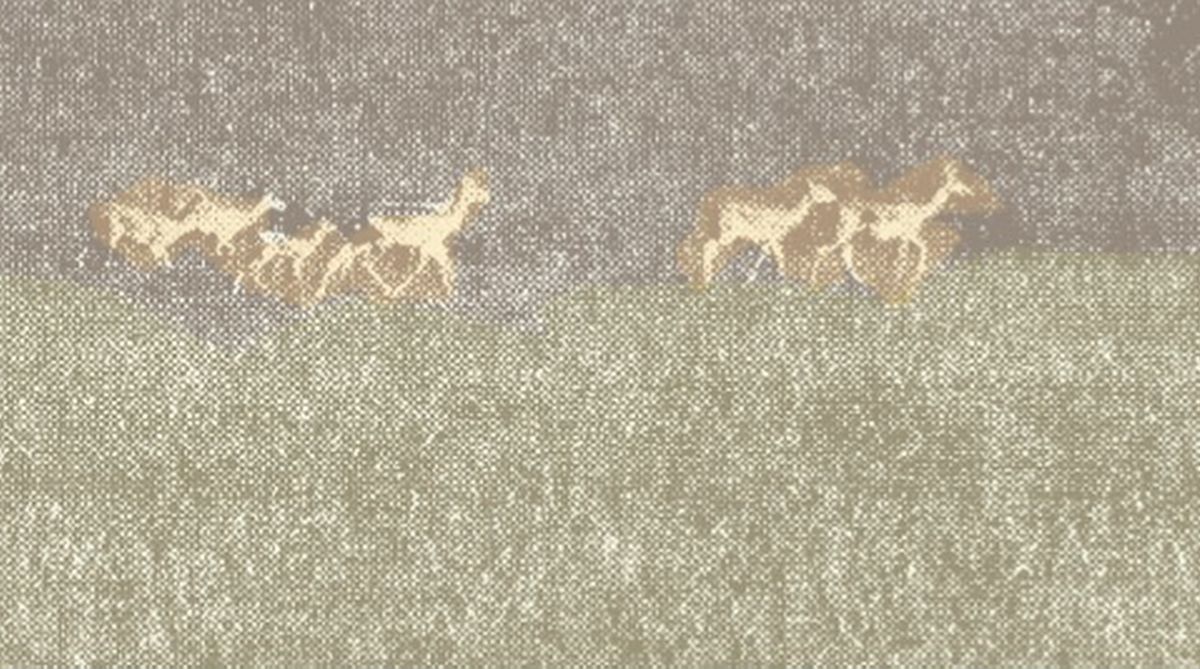Three were two parties of blackbuck in the park, each consisting of less than a dozen animals, wandering over the rolling maidans of short grass, and one of the questions I was asked was what could be done to save the declining buck.
Others, too, had been asked this anxious question and at least one of these experts seems to have cautiously suggested that poaching was probably the chief cause of the decline.
Advertisement
What struck me was that this was hardly blackbuck country, in the sense in which some areas in the plains of the Deccan and Rajputana are.
Even in some coastal plains blackbuck are still to be found in large herds as in the Point Calimere Sanctuary. In May Kanha seemed good enough buck country with the maidans very open after the early summer burning, but I believe that with the rains the grass and herbs grow fast and are two to three feet in most places.
Buck, which depend mainly on their keen sight and superlative speed for survival, like the vegetation much lower. It is true that they are quite at home even in bushy scrub where there are large, open clearings and that their habit of leaping high before galloping away enables them to see over bushes but ground, where the vegetation is high, is not the kind of terrain they like.
Apparently, blackbuck never went about in large herds of from 50 to 150 in this part of Madhya Pradesh as they did and do in the flat plains of India. In his Wild Animals in Central India Dunbar Brander says: “blackbuck usually consort in herds of from fifteen to twenty animals, sometimes as many as forty being found together, but unless driven and so massed, the large gatherings sometimes seen in Rajputana do not take place in the Central Province”.
While going to show that the buck had always been found only in parties and small herds here, the quotation also shows that there were a number of such parties for otherwise they could not have been “driven or so massed”. In many books on our fauna it is said that blackbuck are poorest in development, both in body size and in horn, in the South Apparently this opinion was formed in the days when thousands of buck (and does) were shot each year around cantonments and outstations by Thomas Atkins and hid friends.
I know the difficulties of assessing the comparative size of the same animal in different settings, but making due allowance for this. I am sure the buck I saw in Madhya Pradesh were certainly no larger than those I had seen in many parts of the South in fact in some areas in the South they attain a bigger body size and have better horns.
I realize that what I am about to say may cause some disappointment in Madhya Pradesh and perhaps even some resentment, but I say it as a sincere admirer of the Kanha National Park.
Even if the park had been once rich in buck which are now dangerously reduced in numbers and making ever allowance for the very natural and praiseworthy desire of conservationists and lovers of wild life to retain and revive every species of the pristine animals of a great faunal preserve like Kanha it still seems to me that other problems here are so much greater and more pressing (in particular the saving of the MP race of the barasinghe, not on the brink of extinction) that all the available money and energy should be concentrated on them.
All over India blackbuck have been locally exterminated or reduced in numbers hopelessly, in many areas of which they were the feature only 30 years ago ~ the flat country around the Tungabhadra Dam is a typical example. In such places the land has been so completely converted to human occupation and uses that there is no scope for reintroducing the buck into them now Luckily the position is different in the Kenha National Park and even if the few blackhuck now inhabiting it die out it should be possible to reintroduce the buck into this wonderful preserve later.
This was published on 1 June 1969.











